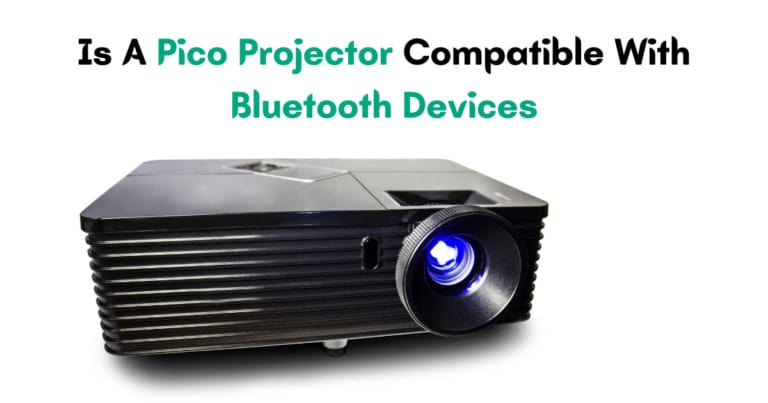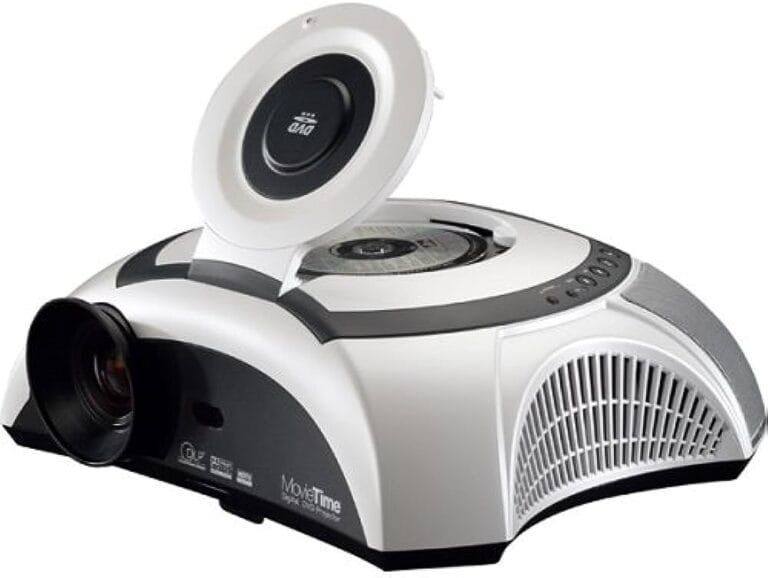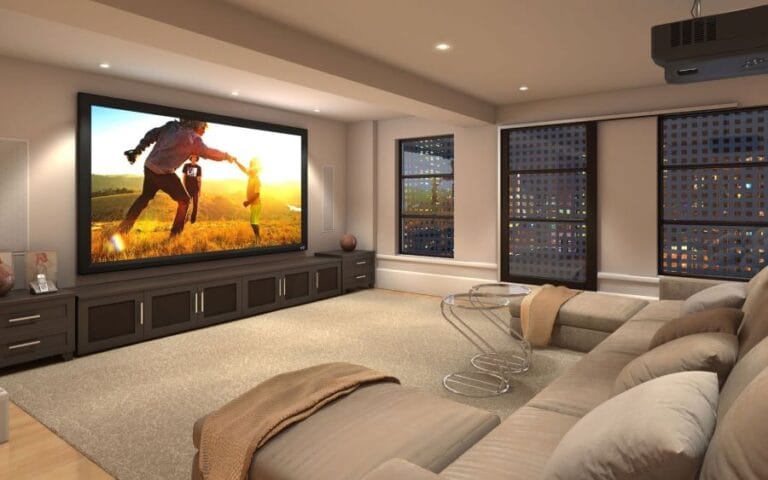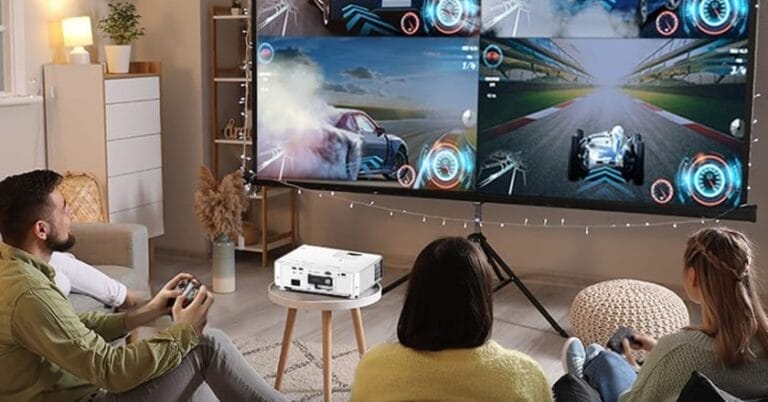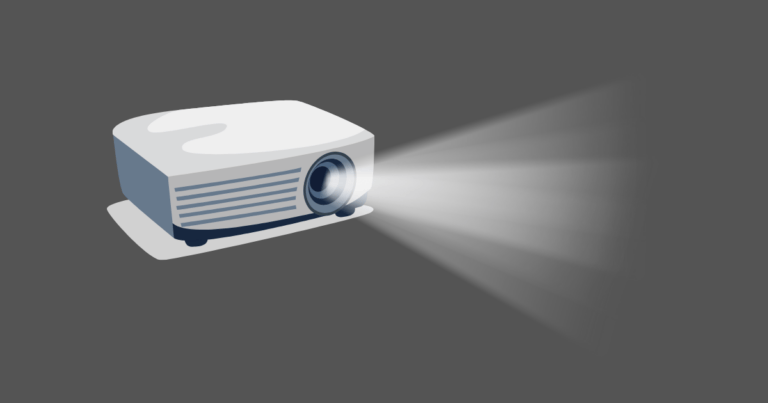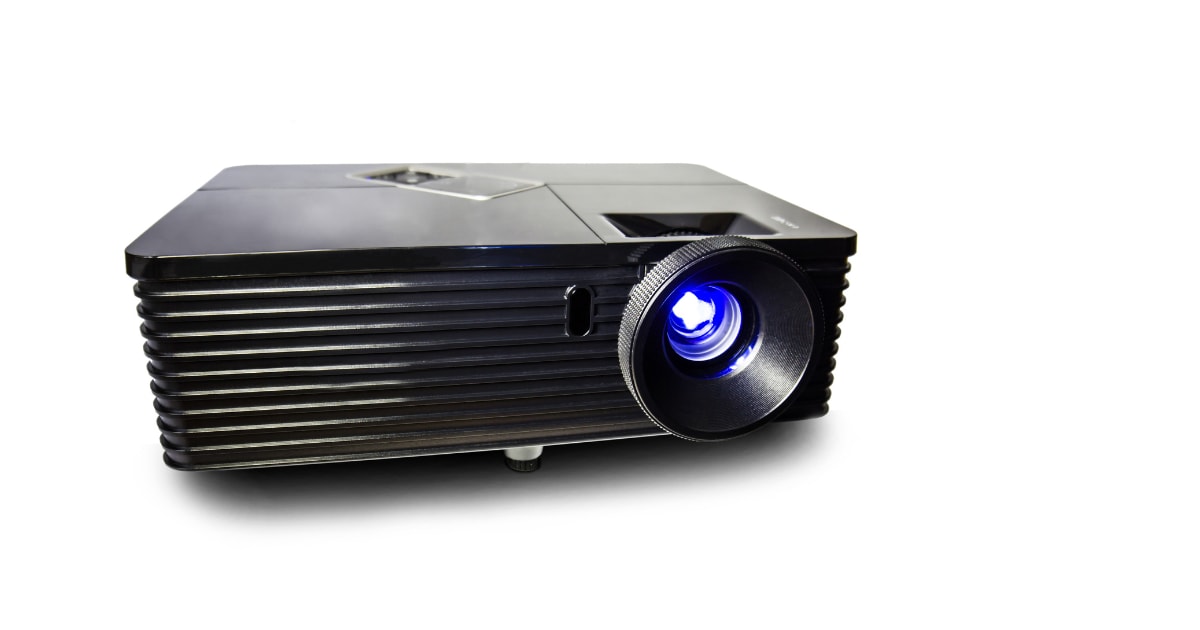
Is it possible to use an LCD projector in well-lit environments? Let’s dive in and find out!
Picture this: you’re all ready to watch your favorite movie or give an important presentation, but the room is flooded with bright sunlight. Bummer, right? That’s where the question arises – can an LCD projector hold its own in the face of abundant light?
Before we jump to any conclusions, let’s explore the capabilities of LCD projectors in well-lit spaces. So grab a seat and let’s shed some light on this topic!
Is It Possible to Use an LCD Projector in Well-lit Environments?
Using an LCD projector in well-lit environments is possible, although it may affect the image quality. Here are a few tips to improve visibility:
- Ensure the projector has high brightness and contrast.
- Use a projector screen or a white and smooth surface.
- Adjust the projector settings for optimal brightness and color.
- Dim or control the ambient lighting in the room.
- Position the projector away from direct light sources.
By following these steps, you can still enjoy using an LCD projector even in well-lit environments.
Benefits of Using an LCD Projector in Well-lit Environments
Contrary to popular belief, using an LCD projector in a well-lit environment offers several benefits. Firstly, it allows for greater flexibility in terms of venue choice. Whether you’re hosting a business presentation, conducting a training session, or organizing an outdoor event, being able to project content in well-lit spaces expands the possibilities.
In addition, using an LCD projector in well-lit environments allows for better visibility for the audience. Brighter ambient lighting eliminates the need for a completely darkened room, ensuring that viewers can comfortably see the projected content without straining their eyes.
This can be particularly important in educational settings or larger conference rooms where natural lighting is harder to control.
Furthermore, LCD projectors are known for their vibrant colors and high image quality. Even in well-lit environments, LCD projectors can produce sharp and clear images, ensuring that every detail of your content is rendered accurately. This is especially important for presentations that involve detailed graphics, charts, or videos.
Technology Behind LCD Projectors and Their Performance in Well-lit Environments
To understand how LCD projectors perform in well-lit environments, it’s essential to grasp the technology behind them. LCD projectors utilize liquid crystal display panels that are responsible for projecting images onto a screen. These panels have excellent light control capabilities, allowing them to effectively display content even in bright conditions.
One of the key elements that contribute to the success of LCD projectors in well-lit environments is their high brightness output. Projectors with high lumens rating, such as 3,500 lumens or higher, are specifically designed to deliver bright and vibrant images even in locations with a lot of ambient light.
This makes them suitable for various applications, from classrooms and boardrooms to outdoor venues.
Additionally, LCD projectors often feature advanced image enhancement technologies such as dynamic contrast ratios and color correction techniques.
These technologies further improve the projector’s performance by enhancing the depth of black levels, increasing color accuracy, and reducing the impact of ambient light on the image quality. As a result, the projected content remains clear, vivid, and easily visible, regardless of the lighting conditions.
Tips for Optimizing the Use of an LCD Projector in Well-lit Environments
While LCD projectors are well-equipped to handle well-lit environments, there are still some tips you can follow to optimize their performance:
- Choose a projector with a high brightness rating: Look for projectors with a lumen output suitable for your specific environment. The higher the lumen rating, the better the projector will perform in well-lit conditions.
- Consider ambient light control: While LCD projectors can handle well-lit environments, minimizing ambient light can still help improve image quality. Whenever possible, dimming the lights or using curtains to block out sunlight can enhance the viewing experience.
- Adjust the projector settings: Most LCD projectors come with settings that can be adjusted to adapt to different lighting conditions. Experiment with the brightness, contrast, and color settings to find the optimal balance for your specific environment.
- Use a suitable projection screen: Investing in a high-quality projection screen designed for well-lit environments can significantly enhance the performance of the LCD projector. Look for screens with high gain values and good light reflection properties.
- Position the projector properly: Proper placement of the projector is crucial for achieving optimal performance. Ensure that the projector is positioned correctly and aligned with the projection screen to avoid any distortions or uneven image quality.
Comparing LCD Projectors with Other Projection Technologies
While LCD projectors are capable of performing well in well-lit environments, it is worth considering how they compare to other projection technologies, such as DLP (Digital Light Processing) projectors and laser projectors.
Benefits of LCD Projectors over DLP Projectors
When it comes to comparing LCD projectors with DLP projectors, several factors come into play:
- Color Accuracy: LCD projectors generally offer better color accuracy, making them suitable for applications where accurate color representation is crucial, such as graphic design or photography.
- No “Rainbow Effect”: Some viewers may experience a “rainbow effect” when viewing DLP projectors. This effect causes brief flashes of color, which can be distracting for some individuals. LCD projectors do not suffer from this issue.
- Better Performance in Well-lit Environments: While both LCD and DLP projectors can perform well in well-lit environments, LCD projectors tend to have higher brightness levels, providing brighter and more vibrant images.
Benefits of LCD Projectors over Laser Projectors
When considering LCD projectors versus laser projectors, the following advantages can be identified:
- Price: LCD projectors are generally more affordable than laser projectors, making them a more budget-friendly option without compromising on performance.
- Color Reproduction: LCD projectors are known for their accurate color reproduction, which can be particularly important for applications like professional photography or graphic design.
- Versatility: LCD projectors offer a wide range of models and options, making them versatile for various applications and environments. They can be easily integrated into existing setups without extensive modifications.
Using an LCD projector in well-lit environments is not only possible but can also offer numerous benefits. With their high brightness output, advanced image enhancement technologies, and the ability to handle ambient light, LCD projectors are a reliable option for projecting content in various settings.
By following the tips for optimizing performance and considering their advantages over other technologies, you can ensure a successful projection experience even in well-lit environments. Whether you’re hosting a business meeting, delivering a presentation, or enjoying a movie night under the stars, LCD projectors can deliver stunning visuals without compromising on image quality.
Frequently Asked Questions
Are you wondering if you can use an LCD projector in well-lit environments? Check out these commonly asked questions to learn more.
1. Can an LCD projector display a clear image in a well-lit room?
Yes, it is possible for an LCD projector to display a clear image in a well-lit room. LCD projectors are designed with high-brightness capabilities, allowing them to produce bright and vibrant images even in well-lit environments. However, the level of ambient light in the room and the projector’s brightness specifications will determine the overall image quality. It’s important to use a projector with sufficient brightness and adjust the room lighting if necessary.
Additionally, you can enhance image visibility by using a projector screen that reflects more light towards the viewers and reduces ambient light interference. Consider using a screen with a high-gain surface or an ambient light-rejecting screen for optimal image clarity in well-lit environments.
2. What are the key factors to consider when using an LCD projector in a well-lit room?
When using an LCD projector in a well-lit room, several factors should be considered for optimal image quality. Firstly, the projector’s brightness or luminosity is crucial. A projector with higher ANSI lumens will produce a brighter image, making it more visible in well-lit environments. Evaluate the ambient light conditions of the room and choose a projector with the appropriate brightness level to combat any potential washout.
Secondly, the projector’s contrast ratio plays a significant role in image clarity. Higher contrast ratios can help display sharper and more detailed images, even in well-lit environments. Consider using a projector with a high contrast ratio for better performance in rooms with ambient light.
3. Can I adjust the settings of an LCD projector for better visibility in well-lit environments?
Yes, you can adjust the settings of an LCD projector to improve visibility in well-lit environments. Most LCD projectors offer various image adjustment options like brightness, contrast, color saturation, and gamma correction. By tweaking these settings, you can optimize the image quality and enhance visibility in a well-lit room.
Additionally, many projectors feature a “high-brightness” or “daylight” mode specifically designed for use in well-lit environments. Activating this mode will increase the projector’s brightness and improve visibility in brighter settings. Experiment with different settings and modes to find the ideal configuration for your specific environment.
4. Are there any limitations to using an LCD projector in well-lit environments?
While it is possible to use an LCD projector in well-lit environments, there are some limitations to be aware of. One limitation is that the ambient light may still affect the projected image, especially if the room is excessively bright. Even with a high-brightness projector, extreme levels of ambient light can wash out the image and reduce visibility.
Another limitation is that LCD projectors may not perform as well as some other projection technologies, such as DLP (Digital Light Processing), in high-ambient light conditions. DLP projectors often have better contrast ratios and handle ambient light more effectively. If your well-lit environment presents significant challenges, you may want to consider alternative projection technologies.
5. What can I do to optimize the image quality of an LCD projector in well-lit environments?
To optimize the image quality of an LCD projector in well-lit environments, there are a few steps you can take. Firstly, adjust the room lighting to minimize ambient light as much as possible. Use curtains, blinds, or other window coverings to darken the room and reduce external light sources.
Secondly, consider using a projector screen designed specifically for well-lit environments. Screens with high-gain surfaces or ambient light-rejecting capabilities can help combat the effects of ambient light and improve image clarity. Lastly, ensure that the projector is positioned correctly and focused properly for the best possible image quality.
Using an LCD projector in well-lit environments can be challenging. The brightness of the projector, the amount of ambient light, and the quality of the screen all play a role in the visibility of the image. While LCD projectors can work in well-lit areas, it is important to consider these factors to ensure optimal viewing.
To use an LCD projector successfully in a well-lit environment, it is crucial to choose a projector with high brightness. Additionally, controlling the amount of ambient light in the room by dimming or blocking out windows can improve visibility. Lastly, investing in a high-quality screen with a matte finish can help reduce glare and enhance the image quality. By considering these factors, it is possible to use an LCD projector in well-lit environments with satisfactory results.

